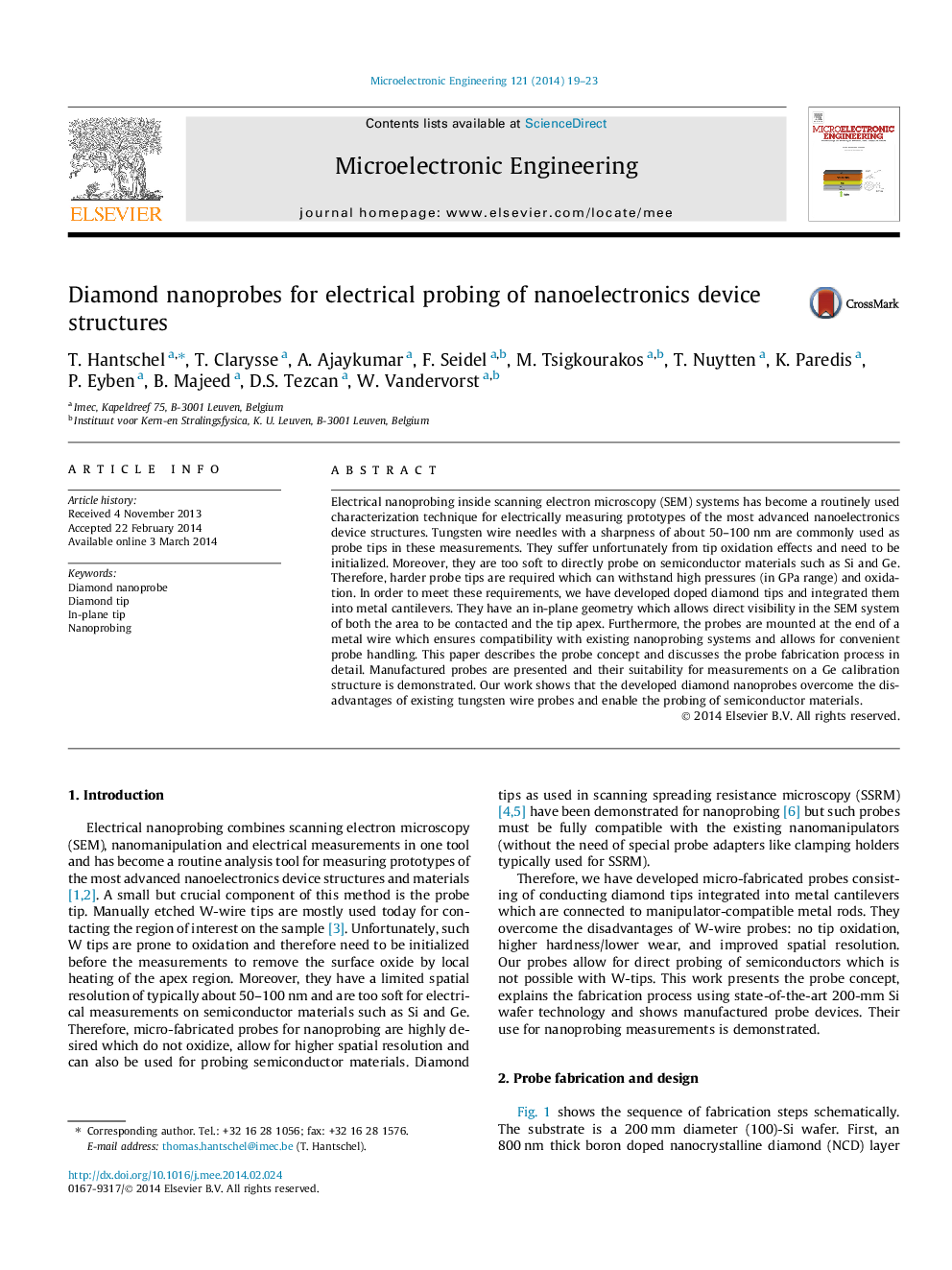| Article ID | Journal | Published Year | Pages | File Type |
|---|---|---|---|---|
| 539540 | Microelectronic Engineering | 2014 | 5 Pages |
•We present in-plane diamond tips on Ni cantilevers attached to Cu wires for nanoprobing.•The probes are made by common 200-mm Si wafer technology.•The diamond tips withstand high pressures (GPa range) needed for Ge probing.•The diamond nanoprobes overcome the disadvantages of existing W-probe needles.
Electrical nanoprobing inside scanning electron microscopy (SEM) systems has become a routinely used characterization technique for electrically measuring prototypes of the most advanced nanoelectronics device structures. Tungsten wire needles with a sharpness of about 50–100 nm are commonly used as probe tips in these measurements. They suffer unfortunately from tip oxidation effects and need to be initialized. Moreover, they are too soft to directly probe on semiconductor materials such as Si and Ge. Therefore, harder probe tips are required which can withstand high pressures (in GPa range) and oxidation. In order to meet these requirements, we have developed doped diamond tips and integrated them into metal cantilevers. They have an in-plane geometry which allows direct visibility in the SEM system of both the area to be contacted and the tip apex. Furthermore, the probes are mounted at the end of a metal wire which ensures compatibility with existing nanoprobing systems and allows for convenient probe handling. This paper describes the probe concept and discusses the probe fabrication process in detail. Manufactured probes are presented and their suitability for measurements on a Ge calibration structure is demonstrated. Our work shows that the developed diamond nanoprobes overcome the disadvantages of existing tungsten wire probes and enable the probing of semiconductor materials.
Graphical abstractFigure optionsDownload full-size imageDownload as PowerPoint slide
